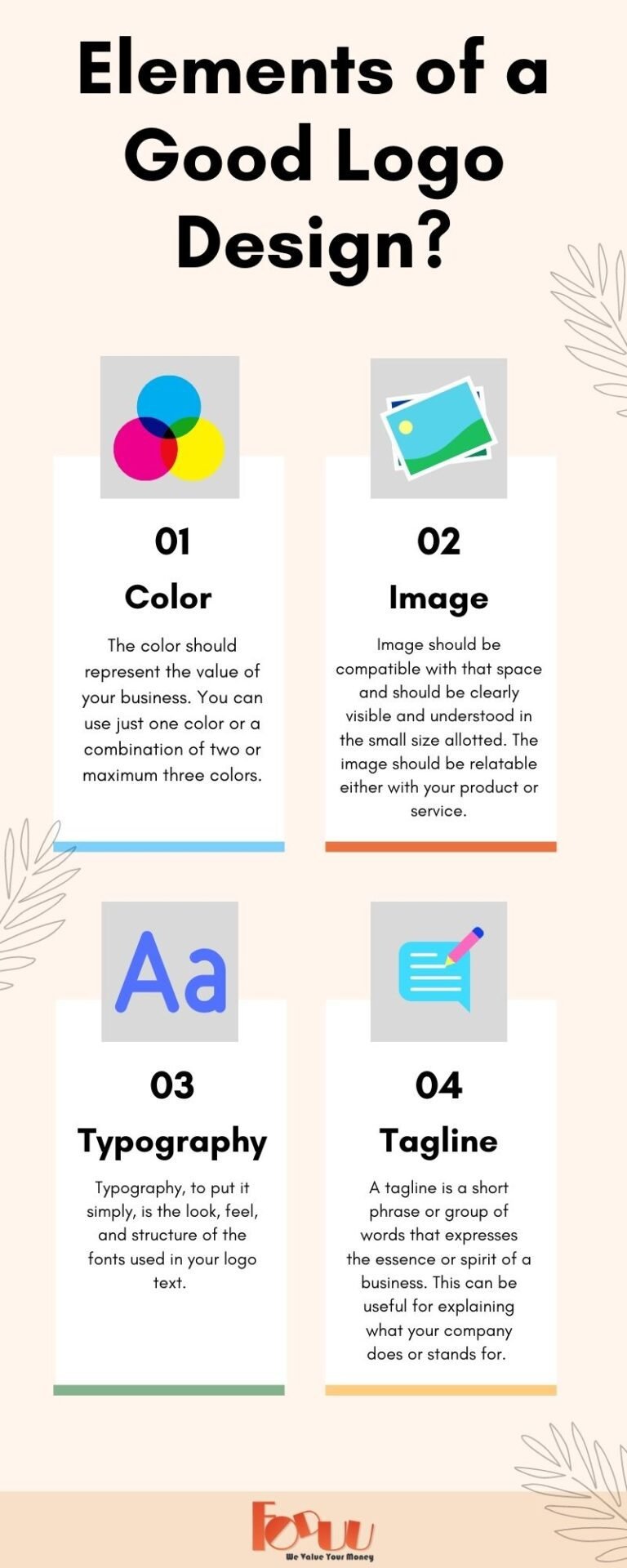A logo is more than just a design. It represents a brand’s identity.
In today’s competitive market, a well-designed logo can make or break a brand. It is the first impression consumers get and can communicate a company’s values, mission, and quality. A logo should encapsulate the essence of the brand it represents, creating an immediate connection with the audience. It needs to be unique, memorable, and versatile, ensuring that it stands out in various contexts. Understanding what a logo should represent is crucial for businesses aiming to establish a strong and consistent brand presence. If you need help crafting the perfect logo, consider hiring a professional logo designer on Fiverr. They offer custom, modern, and minimalist logo designs tailored to your brand’s needs.

Credit: www.clinicaltrialvanguard.com
Introduction To Logo Design
Logo design is a critical aspect of a brand’s identity. A well-crafted logo communicates the essence of a brand in a single glance. It serves as a visual representation that is memorable and impactful.
The Importance Of A Logo
A logo is more than just a pretty symbol. It is a powerful tool that represents the brand’s values, mission, and vision. A strong logo:
- Creates a lasting impression
- Builds brand recognition
- Communicates professionalism
- Distinguishes the brand from competitors
Investing in a good logo is essential for any business looking to establish a strong presence in the market.
What A Logo Represents
A logo should represent the core of the brand. It should reflect:
- Identity: Who the brand is and what it stands for.
- Values: The principles and ethics the brand upholds.
- Promise: The commitment the brand makes to its customers.
- Culture: The environment and ethos within the brand.
A logo is not just a design; it is a story told through visuals. Every element, from color to font, plays a role in conveying this story.
Choosing the right logo designer is crucial. Consider using a professional service like Fiverr to ensure a high-quality and fitting logo for your brand.

Credit: www.tailorbrands.com
Key Elements Of An Effective Logo
A logo is more than just a visual mark; it is the face of a brand. An effective logo should encapsulate the essence of the brand and communicate it clearly to the audience. Here, we explore the key elements that make a logo truly effective.
Simplicity And Memorability
A simple logo is easy to recognize and remember. It avoids clutter and unnecessary details. A memorable logo ensures that people can recall the brand effortlessly. Think of iconic logos like Nike’s swoosh or Apple’s apple. They are simple yet powerful in their design.
Relevance To The Brand
An effective logo must be relevant to the brand it represents. It should align with the brand’s values, mission, and industry. For instance, a tech company might use sleek, modern designs, while an organic food brand might opt for earthy, natural elements. Relevance helps in building a strong brand identity.
Versatility Across Platforms
A good logo should be versatile. It needs to look great on various platforms, from business cards to billboards. This includes digital platforms like social media and websites. A versatile logo maintains its integrity and clarity, whether it’s scaled up or down, printed in color, or in black and white.
Symbolism In Logo Design
Logos are not just images. They are symbols of a brand’s identity and values. A well-designed logo communicates the essence of a brand at a glance. Understanding symbolism in logo design helps create a deeper connection with the audience. The use of color, shape, and font all play crucial roles in conveying the right message.
Color Psychology
Colors evoke emotions and influence perceptions. Each color has its own meaning and effect on the viewer. Choosing the right colors can make a logo more impactful.
- Red: Represents energy, passion, and excitement.
- Blue: Conveys trust, professionalism, and calmness.
- Green: Symbolizes growth, health, and tranquility.
- Yellow: Indicates happiness, optimism, and warmth.
- Black: Reflects sophistication, elegance, and power.
Shape And Form Significance
Shapes in logos influence how a brand is perceived. Different shapes communicate different messages.
| Shape | Significance |
|---|---|
| Circles: | Unity, protection, and eternity. |
| Squares: | Stability, balance, and reliability. |
| Triangles: | Power, direction, and progress. |
| Lines: | Movement, direction, and innovation. |
Typography And Font Choices
The font used in a logo is as important as its color and shape. Typography must align with the brand’s personality and message.
- Serif Fonts: Traditional, reliable, and formal.
- Sans-Serif Fonts: Modern, clean, and straightforward.
- Script Fonts: Elegant, creative, and personal.
- Display Fonts: Unique, bold, and attention-grabbing.
Making the right choices in color, shape, and typography ensures that a logo effectively represents the brand. It captures attention and leaves a lasting impression.
Communicating Brand Values Through Logos
A logo does more than just identify a brand. It serves as a visual representation of a company’s values, mission, and vision. A well-designed logo can communicate the essence of a brand, making it instantly recognizable and memorable. Let’s explore how logos can reflect brand values through various elements.
Reflecting Mission And Vision
A company’s logo should embody its mission and vision. The design elements should reflect what the company stands for and aims to achieve. For example, a company focused on sustainability might use green colors and natural shapes in its logo. This tells the audience about its commitment to the environment.
Consider the use of symbols, colors, and fonts that align with your brand’s mission. A tech company might use sleek, modern fonts and futuristic symbols. A traditional business might prefer classic fonts and timeless icons.
Target Audience Connection
The logo should connect with the target audience. Understanding your audience’s preferences and expectations is crucial. If the audience is young and trendy, the logo should be vibrant and modern. For a more mature audience, a sophisticated and elegant design might be more appropriate.
Creating a connection means considering the demographics, interests, and even the cultural context of the target audience. A well-designed logo resonates emotionally, creating a bond between the brand and its customers.
Cultural And Social Relevance
A logo should also reflect cultural and social relevance. It should be designed with an awareness of cultural symbols and meanings. A logo that is socially relevant will resonate more deeply with the audience. For example, using culturally significant colors or shapes can enhance the brand’s appeal.
It’s important to avoid cultural appropriation and ensure that the design respects and acknowledges the audience’s cultural context. This creates a sense of authenticity and trust.
By focusing on these elements, a logo can effectively communicate a brand’s values and connect with its audience in meaningful ways.
Case Studies Of Iconic Logos
Logos are the face of a brand. They convey the essence of a company. Let’s look at some iconic logos. We’ll see what makes them successful. We’ll also learn from rebranding failures.
Analysis Of Successful Logos
Successful logos share common traits. They are simple, memorable, and versatile. Let’s analyze some iconic logos.
| Brand | Logo | Key Elements |
|---|---|---|
| Apple | Minimalist design, monochrome color scheme, recognizable shape | |
| Nike | Swoosh symbol, simplicity, dynamic movement | |
| McDonald’s | Golden Arches, bright colors, playful design |
Lessons Learned From Rebranding Failures
Not all logo changes succeed. Let’s review some rebranding failures.
- Gap: In 2010, Gap changed its logo. The new design faced backlash. It was too different from the original. They reverted to the old logo within a week.
- Tropicana: In 2009, Tropicana redesigned its packaging. Sales dropped by 20%. The new design confused customers. They returned to the old design.
- Pepsi: Pepsi has rebranded multiple times. Some redesigns were successful. Others were not. The 2008 redesign faced criticism for being too expensive and not impactful.
These failures teach valuable lessons. A logo change should not stray too far from the original. Customer feedback is crucial. A new logo should preserve brand identity.

Credit: openart.ai
Tips For Designing A Powerful Logo
Designing a powerful logo is essential for any business. A great logo represents your brand and leaves a lasting impression. Here are some tips to help create a strong and impactful logo.
Working With Professional Designers
Hiring a professional designer can make a significant difference. They bring expertise and experience to the table. You can find talented designers on platforms like Fiverr.
Professional designers understand the intricacies of color theory, typography, and visual balance. They know how to create logos that are not just visually appealing but also meaningful and memorable.
Iterative Design Process
A powerful logo often emerges from an iterative design process. This means creating several versions of the logo and refining it over time.
Start with basic sketches or drafts. Evaluate each version and see what works best. Gradually enhance the design until it meets your expectations. This process ensures that the final logo is well thought out and polished.
Feedback And Refinement
Seeking feedback is crucial in the logo design process. Share your logo drafts with colleagues, friends, and potential customers. Gather their opinions and insights.
Use this feedback to refine and improve the logo. Sometimes, a fresh perspective can reveal areas for improvement that you might have missed.
| Step | Description |
|---|---|
| 1. Initial Concept | Brainstorm and sketch initial ideas. |
| 2. First Drafts | Create digital versions of the best ideas. |
| 3. Feedback | Share drafts and gather feedback. |
| 4. Refinement | Make improvements based on feedback. |
| 5. Final Design | Polish and finalize the logo. |
By following these tips, you can create a logo that truly represents your brand. A well-designed logo can set you apart and make a lasting impression on your audience.
Frequently Asked Questions
What Should A Logo Represent?
A logo should represent a brand’s identity, values, and mission. It creates a visual connection with the audience. It should be memorable.
How Important Is A Logo’s Design?
A logo’s design is crucial as it impacts brand recognition. A well-designed logo attracts customers. It sets the brand apart.
Can A Logo Influence Brand Perception?
Yes, a logo can significantly influence brand perception. A professional logo builds trust and credibility. It reflects the brand’s quality.
What Elements Make A Good Logo?
A good logo includes simplicity, relevance, and versatility. It should be easily recognizable and scalable. It must reflect the brand’s essence.
Conclusion
A logo should reflect your brand’s essence. It must be simple yet memorable. A well-designed logo builds trust and recognition. Need a professional logo? Check out this Logo designer on Fiverr. They create modern, minimalist logos to elevate your brand. Invest in a logo that speaks for you.

I have been working as an SEO Expert in Bangladesh for a long time and now providing the best SEO Service in Bangladesh. With the approach to Semantic SEO that eschews superfluity. I can get your business web page at the top of the SERP list. Using the latest digital marketing trends, I can enhance your online visibility and drive more website traffic.
